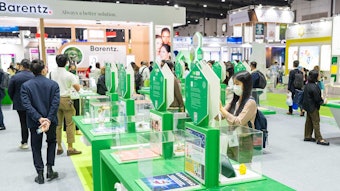Today’s world has evolved tiny things to pack a mean punch. Cell phones, for example, have shrunk in size while expanding their functions to serve as music players, send e-mail, play movies and TV shows and act as global positioning satellites. This trend for “small but mighty” has translated from many fields—especially medical and pharma—into personal care where new and interesting materials are shrinking to carry active ingredients deeper into the skin. With such a concentrated focus on advancing nano-scale materials, it becomes increasingly important to look out for what impact these little guys have on the macro-scale, or the overall environment they are reaching.
According to a recent report from Nanotechwire.com, new concerns are emerging about the policies related to the nanotech industry since nano-engineered materials are an increasingly growing market segment. The National Science Foundation reportedly estimated that by 2015, nanotechnology will have a US$1 trillion impact on the global economy and will employ 2 million workers. This research impacts applications from lubricants to cosmetics, energy cells to vitamins; and while significant improvements are made to nanotech engineering, safety is still a concern, especially in how the production of nanomaterials could create hazardous waste that current technology cannot dispose of properly.
In response to such concerns, The Woodrow Wilson International Center for Scholars (Wilson Center), based in Washington, DC, initiated a GreenNano series to develop clean technologies using nanotechnology to minimize potential environmental and human health risks, and to encourage replacement of existing nano-products with those that are more environmentally friendly throughout their lifecycle.
The program, held in May 2006, focused on the engineering prospects for green nanotechnology and explored how environmentally benign manufacturing and green engineering and design can be integrated into nanoproduct manufacturing. It also examined the tools engineers need to manufacture nanomaterials and products “greenly,” and the engineering challenges posed by moving to the nanoscale. For more information on this session, log on to: http://www.wilsoncenter.org/index.cfm?fuseaction=events.event_summary&event_id=185537.
In the niche area of personal care, green and nanotech trends currently co-exist somewhat side-by-side. Manufacturers of products are more often seeking materials made from sustainable resources and methods that protect the earth. Nanomaterials are utilized in sun care and antiaging to better protect consumers. As other industries are seeing, the direct and indirect paths of these trends surely will meet.









![Lead Image2 [nas] 800x450px](https://img.cosmeticsandtoiletries.com/files/base/allured/all/image/2024/10/Lead_image2__NAS__800x450px.6704042d635b8.png?auto=format%2Ccompress&fit=crop&h=191&q=70&w=340)
